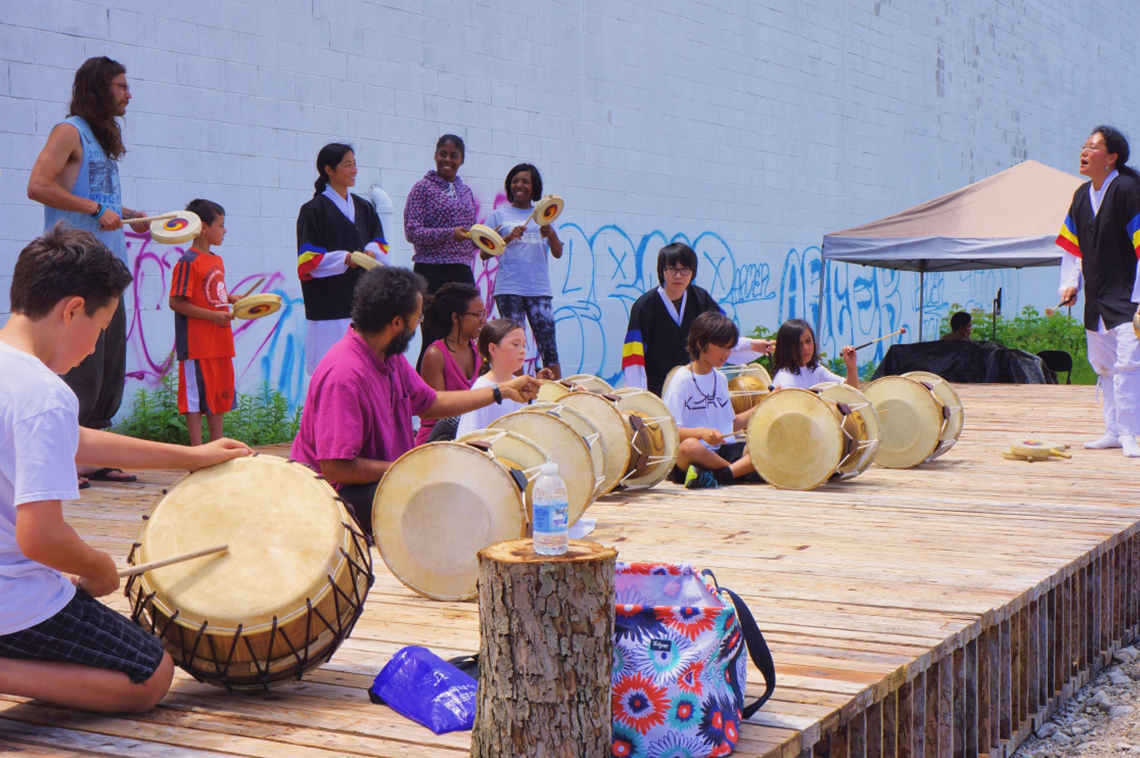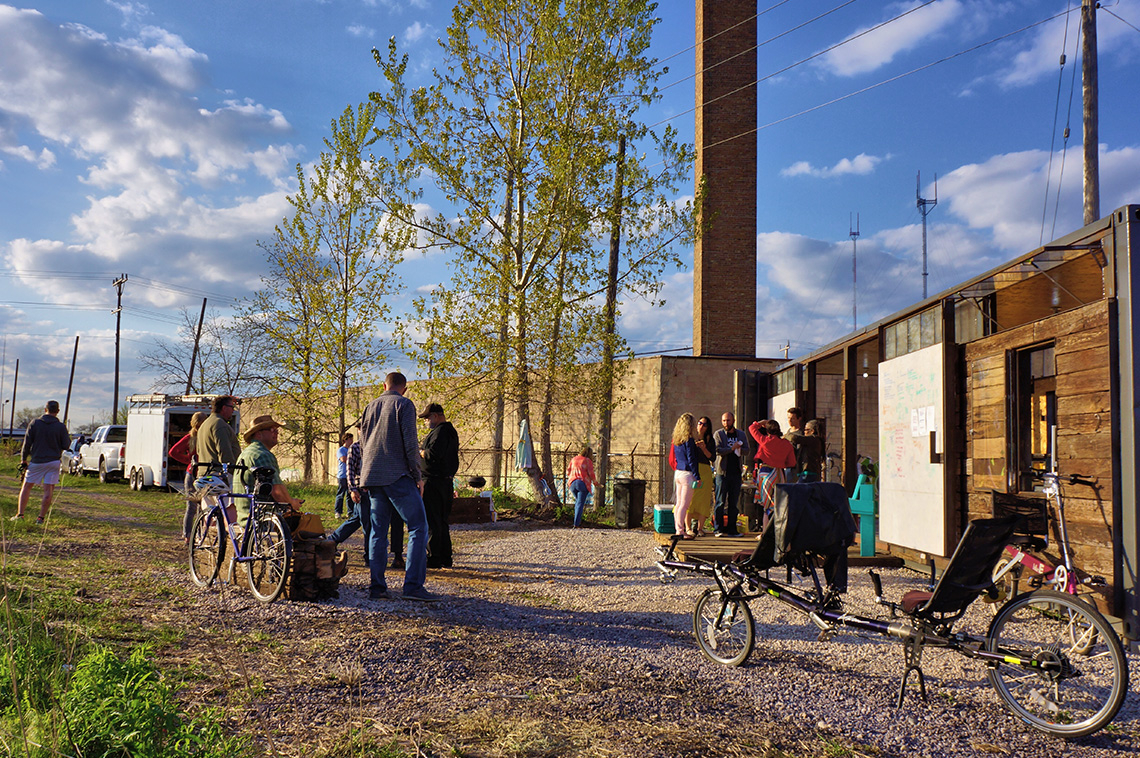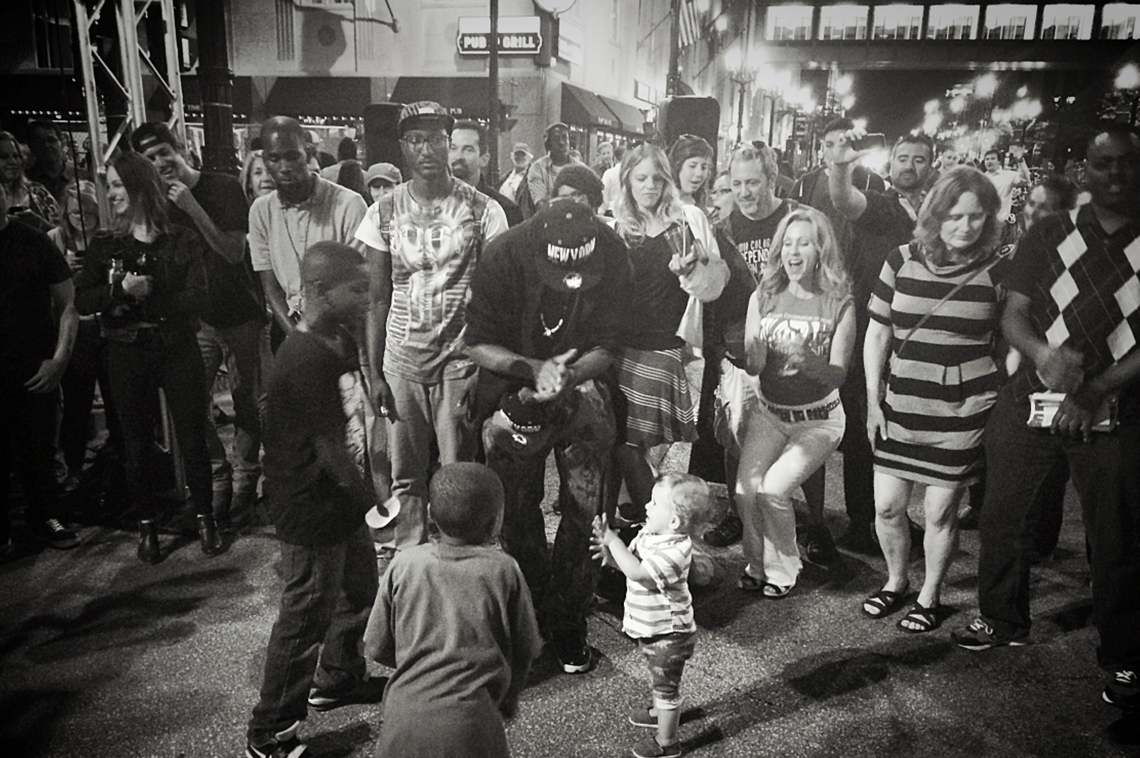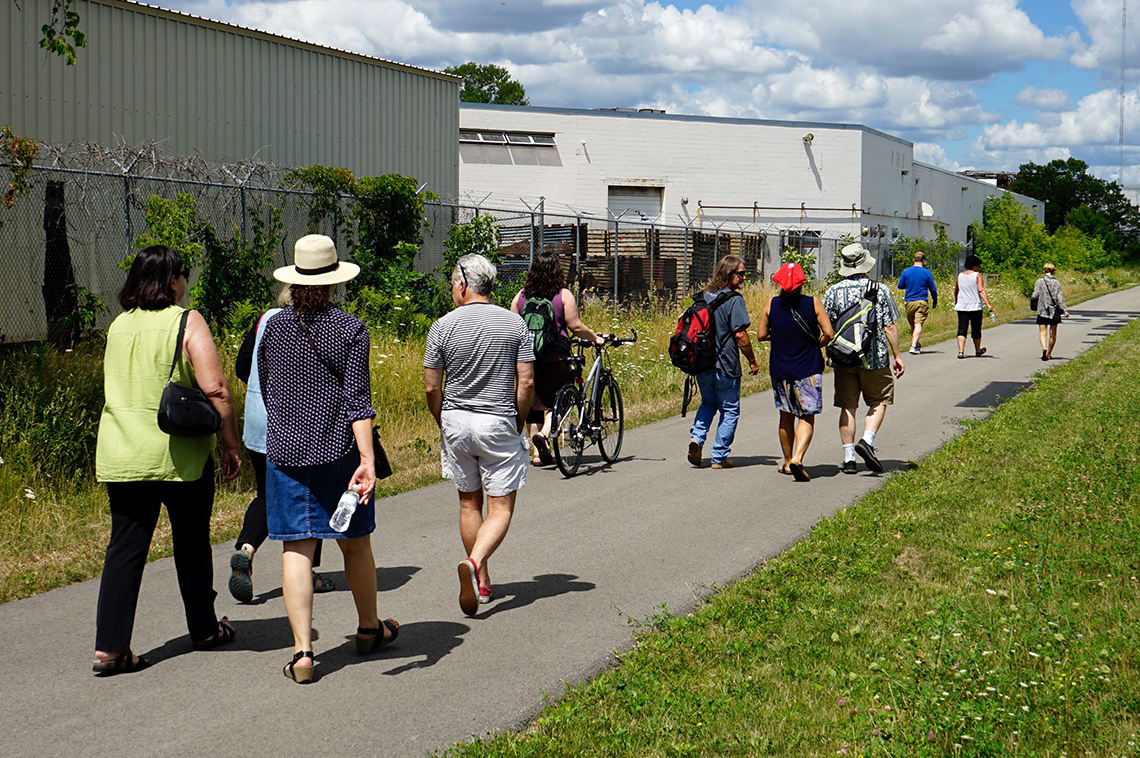



In 2013, ArtPlace America invested in the implementation of two “Creational Trails” in Milwaukee, a project led by the Greater Milwaukee Committee. Both trail initiatives were intended to address specific problems, both were intensely collaborative, and both employed many of the same partners, including MKE<->LAX consultant Sara Daleiden and the City of Milwaukee.
Through a partnership with NEWaukee, the West Wisconsin Avenue Creational Trail resulted in the NEWaukee Night Markets (which continue to be very popular) and impacted the successful redevelopment that is still taking place in the area.
In another part of Milwaukee, our key partners worked closely with Riverworks Development Corporation, Riverworks Business Improvement District #25, and beintween on the Beerline Trail Extension, aka the ARTery. This trail focused on physically and creatively crossing the boundaries between two neighborhoods long separated by racial, social, and economic lines. It also created a new public space that would serve as an economic and cultural spine for the area. The extension built on work dating back to 2002 to develop and activate the initial portion of the Beerline Trail.
Recently, the Urban Institute undertook a study commissioned by ArtPlace America to look at the impact of the Beerline Trail extension project on neighborhood safety via this boundary-crossing approach. In 2012, the Beerline Trail extension was simply a vacant, overgrown rail corridor which was then activated by beintween, a local collaborative that uses the arts to improve spaces and social interactions. Since that time, the work has been stewarded by a cross-sector collaborative including initial partners LISC and Safe & Sound, as well as by other nonprofits, artists, cultural leaders, and residents. Their aim is to perpetually activate and maintain the Beerline Trail extension as a linear park and neighborhood asset to bridge these two disparate parts of our city that were historically divided by discriminatory practices such as redlining.
The Urban Institute study tells the story of our creative placemaking efforts, crime and safety, and community activation in these neighborhoods. For those of you who have been involved in this type of work, you know one of their findings instinctually: an activated space is a safer space.
The resulting report specifically and this type of research in general are important for two reasons:
First, the report documents the history of the project and creates a written record of much of the tremendous work that has taken all of us to this point. While we still have some significant steps in front of us, we have come a long way and are in many ways a different collaborative than when we began. Having this path charted will enable others in different parts of the city, country, or globe to grow as well, as they can learn from our lessons and hopefully be inspired by our successes. The process of a property shifting from a neighborhood blemish to a community asset, and the shifts in attitude that accompany this phenomenon, can be perplexing to capture, especially during the process. But my hope is that we are communicating our journey in a compelling way that motivates other groups to embark on their own similar project—or to support the incredible work that is likely already going on around them.
Second, this study allows the Beerline Trail Project Leadership to reflect on our work with an outsider’s perspective. Reflection is an important part of growth, not only for individuals, but also for communities, collaboratives, and processes. The case study helps outline not only the story of what happened, but also the challenges we faced along the way and the successes we enjoyed. The Urban Institute’s report developed a model of inputs, activities, outputs, and outcomes for our work in a simplified and beautiful format that strips away the complexity our group sees when we are mired in the complexity of the day-to-day. Reflection and clarity in these areas are critical to our continued, collective growth as a project team, as two neighborhoods, and as a whole city.
We hope you find the case study helpful, and we invite you to come visit us where we still work together to create a new physical space of connection, creativity, and safety on the beautiful Beerline Trail extension.
Julia Taylor
President
Greater Milwaukee Committee
- Read the full case study, and others in the "Creative Placemaking and Community Safety" report.
- Read more about ArtPlace’s 2013 investment in the Creational Trails project.





